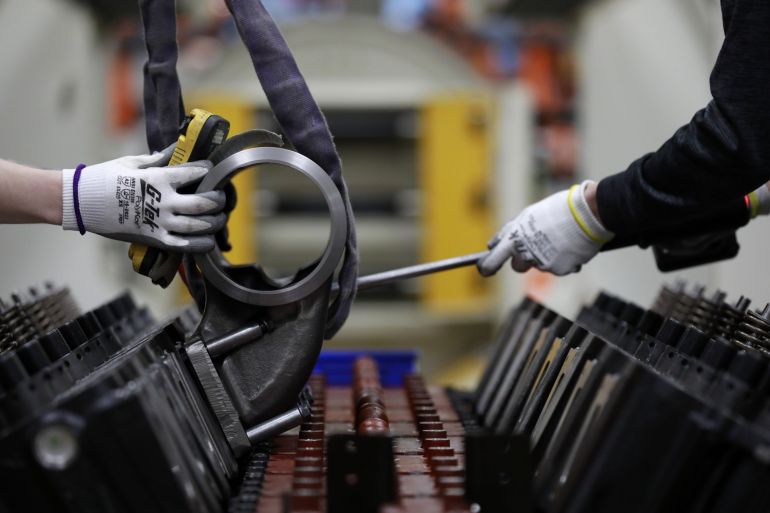US productivity drops most since 1947, driving up labour costs
Nonfarm productivity, measuring hourly output per worker, plunged at a 7.5 percent annualised rate last quarter, the Labor Department says.

US worker productivity fell at its steepest pace since 1947 in the first quarter, while growth in unit labour costs accelerated, indicating that rising wage pressures will continue contributing to keeping inflation elevated for a while.
Nonfarm productivity, which measures hourly output per worker, plunged at a 7.5 percent annualised rate last quarter, the deepest since the third quarter of 1947, the Labor Department said on Thursday. Data for the fourth quarter was revised slightly lower to show productivity growing at a 6.3 percent rate instead of the previously reported 6.6 percent pace.
Keep reading
list of 4 itemsFed raises rates half-point as Powell signals similar moves ahead
TurboTax pays $141m to settle claims it duped consumers
‘The bottom line’: Biden touts falling US budget deficit
Economists polled by Reuters news agency had expected productivity would drop at a 5.4 percent pace. The decline was flagged in last week’s first-quarter gross domestic product (GDP) report, which showed the economy contracting at a 1.4 percent rate in the January-March period.
Productivity fell at a 0.6 percent pace from a year ago. It has been volatile since the start of the COVID-19 pandemic more than two years ago.
Hours worked increased at a 5.5 percent rate in the first quarter after rising at a 2.5 percent pace in the fourth quarter.
Unit labour costs – the price of labour per single unit of output – shot up at an 11.6 percent rate. That followed a 1 percent growth pace in the October-December quarter. Last quarter’s jump likely exaggerates the pace of growth in labour costs.
Unit labour costs increased at a 7.2 percent rate from a year ago. The surge in costs followed on the heels of a government report last week, showing that compensation for American workers notched its largest increase in more than three decades in the first quarter amid a persistent labour shortage.
There were a record 11.5 million job openings at the end of March. The Federal Reserve on Wednesday raised its policy interest rate by half a percentage point, the biggest hike in 22 years, and said the US central bank would begin trimming its bond holdings next month as it battles sky-high inflation. Fed Chair Jerome Powell told reporters that “the labour market is extremely tight, and inflation is much too high”.
Hourly compensation rose at a 3.2 percent rate in the first quarter after growing at a 7.4 percent pace in the fourth quarter. Compensation increased at a 6.5 percent rate compared with the first quarter of 2021.